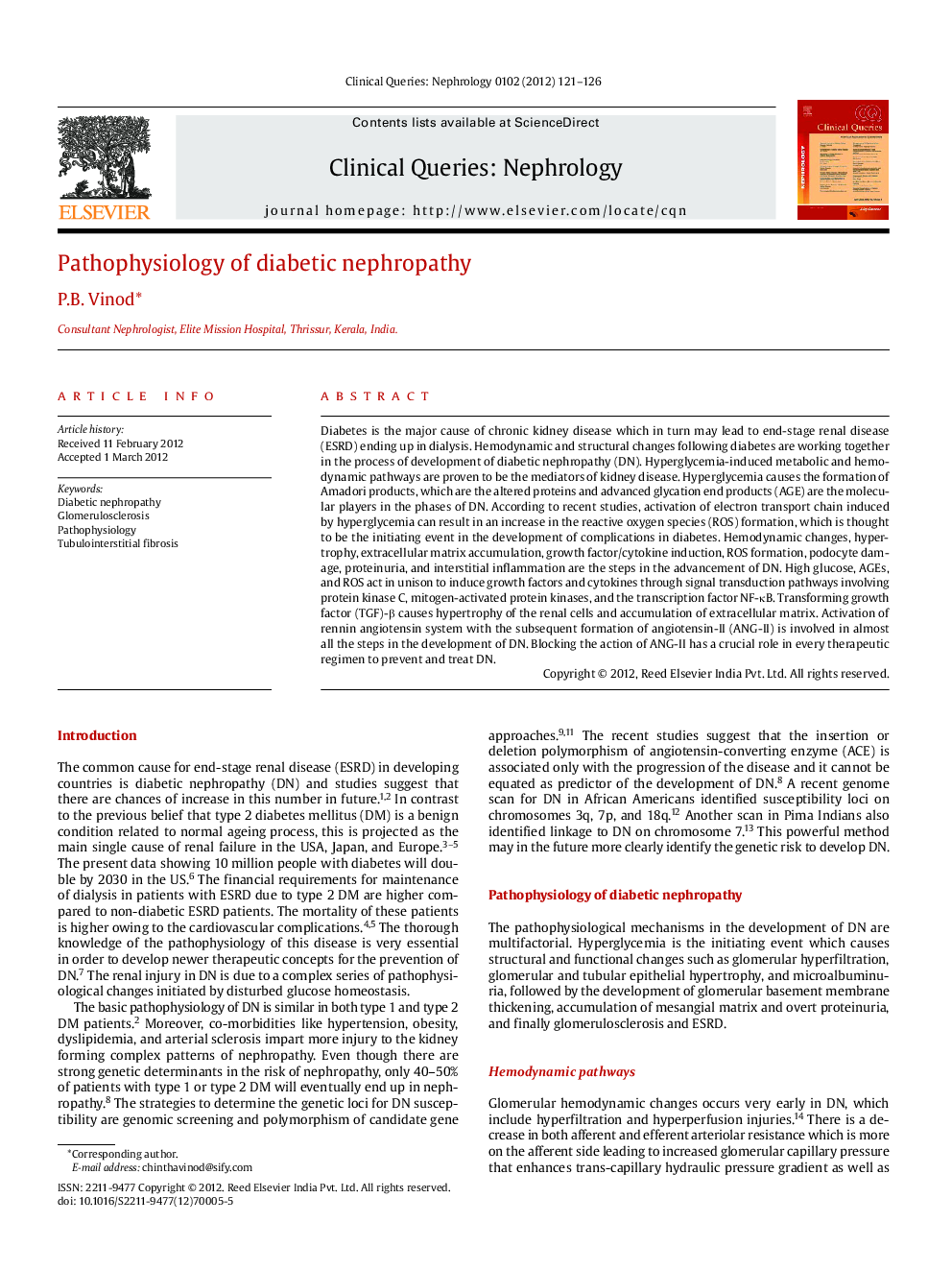| Article ID | Journal | Published Year | Pages | File Type |
|---|---|---|---|---|
| 3108039 | Clinical Queries: Nephrology | 2012 | 6 Pages |
Diabetes is the major cause of chronic kidney disease which in turn may lead to end-stage renal disease (ESRD) ending up in dialysis. Hemodynamic and structural changes following diabetes are working together in the process of development of diabetic nephropathy (DN). Hyperglycemia-induced metabolic and hemodynamic pathways are proven to be the mediators of kidney disease. Hyperglycemia causes the formation of Amadori products, which are the altered proteins and advanced glycation end products (AGE) are the molecular players in the phases of DN. According to recent studies, activation of electron transport chain induced by hyperglycemia can result in an increase in the reactive oxygen species (ROS) formation, which is thought to be the initiating event in the development of complications in diabetes. Hemodynamic changes, hypertrophy, extracellular matrix accumulation, growth factor/cytokine induction, ROS formation, podocyte damage, proteinuria, and interstitial inflammation are the steps in the advancement of DN. High glucose, AGEs, and ROS act in unison to induce growth factors and cytokines through signal transduction pathways involving protein kinase C, mitogen-activated protein kinases, and the transcription factor NF-κB. Transforming growth factor (TGF)-β causes hypertrophy of the renal cells and accumulation of extracellular matrix. Activation of rennin angiotensin system with the subsequent formation of angiotensin-II (ANG-II) is involved in almost all the steps in the development of DN. Blocking the action of ANG-II has a crucial role in every therapeutic regimen to prevent and treat DN.
